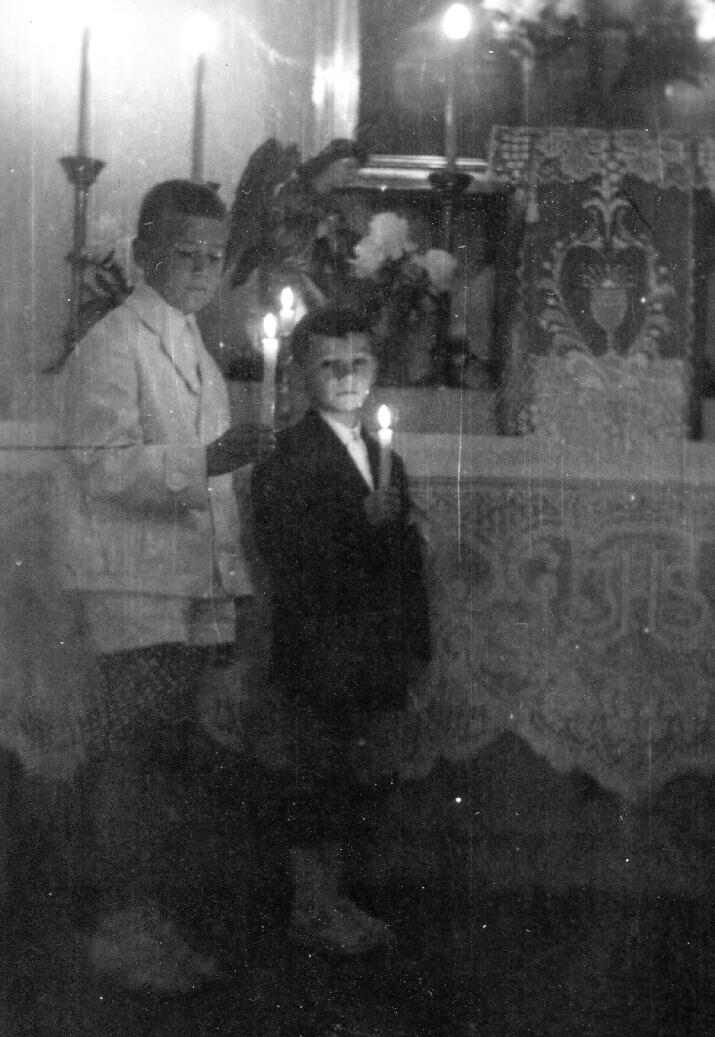
Figure 1.--Here we see two Hungarian boys doing their First Communion in 1959 durting the Communist era. This image is part of a album on an unidentified Hungarian family. |

|
Religion is a major activity and one which has played an imporrant role in Hungarian history. Hungary is a largely Catholic country. Hungary is located in central Europe on the Danube. This central location meant that the country was occupied by many of the principal invaders who played a role in European history (Romans, Germns, Huns, Avars, Magars, Mongols, and Ottomon Turks. It was also swept by the Reformation and Counter Reformation as well as the Communists safter Wokld War II. The Hungarian kings and Hapsburg emperors kept Hungary Catholic. The country'ds diverse heritage as wll as a half-century of Communist rule has introduced a substatial degree of relif\gious skepticism. As in muvh of Europe today, many who identify as Castholic so not regularly asttend church. The counry toiday is very secular. We notice children doing First Communions and participating in weddings.
Hungary especiially the Danube was a border region of the Roman Empire. It was at this time that Jews an Christians first arrived in the region. This early period has left little imprint because of barbzrian invasions from the East. This included the Germans, Huns, Avars, and of course the Maygars. The early religious influences was swept aside by Roman Catholocism. The Catholic religion became established in Hungary during the reign of King Stephen (10th century). He was crowned by the Pope. From that point Hungary has been been a predominantly Roman Catholic country. The Reformation had a significant impact on Hungary (16th century) and left to itselg Hungary probably would have become a Protestant country. Süleymân I known to history as Süleymân the Magnificent at the Battle of Mohács (1526), killed the Jagiellan Louis II of Hungary and Bohemia and most of the Hungarian nobels. Louis' brother-in-law, Ferdinand of Austria, future Emperor and brother of the Emperor Charles V, pressed claims to both crowns for the Hapsburgs, ending an independent Hungarian crown. And the Hapsburgs championed the Counter Reformation. Catholicism was thus reinstated as the principal religion in Hungary (17th century). The Soviet Red Army drove the NAZIs out of Hungary (1944-45). They installed a Communist government which pursued an atheism campaign to undermine Hungarian Christianity. The Communists arrested priests. They also arrested the bishop of Esztergom, Cardinal Mindszenty, and organized a show trial (1949).
Reports in the 2000s indicate that amomg Hungarians declaring a religious affiliation, most identify as Christians. The most important is Roman Catholc. About 70 percent of Hungarians report their religion is Roman Catholic. King Stephen made Roman Catholic Christianity the state religion (10th century). Most other Chriustians are various Prtotestant denominations. Protestantism was introduced into Hungaey from Germany at an early stage of the Reformation (16th century). The substantiasl ains of the Protestant reformers were undone by the Hapsburg-led Counter Reformastion (17th century. Protestant denominations include Reformed (Calvinist) Protestan (21 percent) Evangelical (Lutheran) Protestant (6 percent). There are also small Greek Catholic and Orthodox congregations. Judaism in Hungary has a long history spanning back centuries. Most of Hungary's importasnt pre-World War II Jewish community perished in the Holocaust. There are now about 80,000 Jews in Hungary, only about 10 percent iof the pre-War population.
Hungary was briefly occupied by the Ottoman Turks. Some Hungarians converted to Islam at that time. The numbers are relatively small compated to the Balkans where there was a longer period of Ottoman occupation.
Many Hungarian children once attended Church services. We do not think sunday school was a sommon as in America. Children also have played a variety of roles in church services. As Hungary was a largely Catholic country, this primrily means in the Catholic Church. Thus we are primarily talking about altar boys and First Communion. Many boys served as altar boys for church services. Until recent tomes this was exclusively an activity for boys. This was once very common as was First Communion. A large number of children participated in First Communion until after World War II. The Communists began an athetist campaign, but did not completely destroy the Church. We notice children doing First Communiion in 1959. Boys also participated in weddings. At this time we only have one wedding image. Not all weddings were church weddings, but until the Communist era, most were. The Communist atheist campaign was more sucessful in Hungary than Poland. Thus today religion and children's participation in religious servives is more limited than before the War.
Hungary is a largely Catholic country. Hungary is located in central Europe on the Danube. This central location meant that the country was occupied by many of the principal invaders who played a role in European history (Romans, Germns, Huns, Avars, Magars, Mongols, and Ottomon Turks. It was also swept by the Reformation and Counter Reformation as well as the Communists safter Wokld War II. The Hungarian kings and Hapsburg emperors kept Hungary Catholic. The country'ds diverse heritage as wll as a half-century of Communist rule has introduced a substatial degree of relif\gious skepticism. As in muvh of Europe today, many who identify as Castholic so not regularly asttend church. The counry toiday is very secular.
Navigate the Boys' Historical Clothing Web Site:
[Return to the Main European country religion page]
[Introduction]
[Activities]
[Biographies]
[Chronology]
[Clothing styles]
[Countries]
[Bibliographies]
[Contributions]
[Essays]
[FAQs]
[Glossaries]
[Images]
[Links]
[Registration]
[Tools]
[Boys' Clothing Home]
Navigate the Boys' Historical Clothing Belgin pages:
[Return to the Main Hungarian page]
[Hungarian choirs]
[Hungarian movies]
[Hungarain royals]
[Hungarian schools]
[Hungarian military schools]
[Hungarian youth groups]
